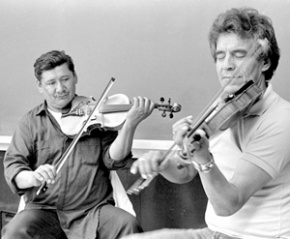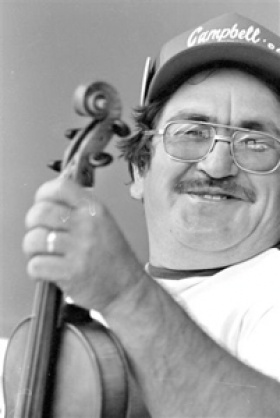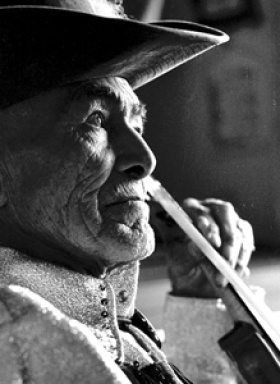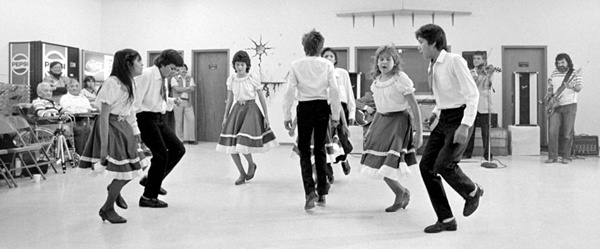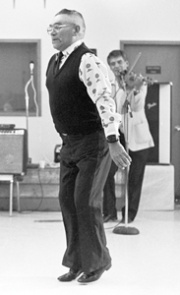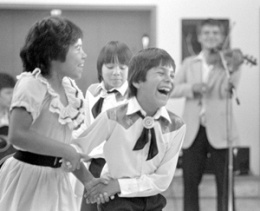Métis Fiddling and Dance
par Lederman, Anne
Métis peoples are those of mixed French and Native ancestry, often including other cultural origins as well, especially Scottish. The word came into common use in the 1800s on the Canadian prairies to describe the children of French-Canadian traders and First Nations women, largely Cree and Ojibwa. These intermarriages spawned a syncretic culture, including distinctive languages, called Mitchif, or Métchif, as well as clothing, food, and music. Central to Métis musical culture, both past and present, is a fiddle and dance tradition which reflects Scottish, French and Aboriginal roots as well as other influences. Fiddling has been so identified with Métis culture that Turtle Mountain players say, “There’s no Metchif without no fiddle. The dancin’ and the fiddle and the Metchif, they’re all the same”(NOTE 1).
Article disponible en français : Musique de violoneux et danse métisses
The Tradition
Métis peoples live in every province and territory of Canada and many of the northern States. In 1982, Métis peoples in Canada were granted Aboriginal status legally, along with First Nations and Inuit peoples. Many are Francophone, but many are not, speaking English and/or Aboriginal or mixed languages. However, all share, to some extent, in an Aboriginal-French-Scottish cultural legacy which varies from one region to another, and even from one family to another. Métis identity is a complicated issue at present (NOTE 2), and it is important to note that there are many First Nations and Inuit fiddlers who also share the traditions described here.
In the late 17th century through the 18th, fiddles, fiddle music and the dances that went with them came to Canada largely with men hired by the Hudson’s Bay Company to work in the fur trade, many from the Orkney and Shetland Islands. By the 19th century, this body of Scottish dance music had probably already evolved into a somewhat distinctive fiddle tradition in Quebec and Acadia, which then came west and north in the hands of French-Canadian voyageurs, mixing further with continued direct Scottish influence, and, in many instances, taking on characteristics of local Native cultures. (Whether or not Québécois and Acadian fiddling was also influenced by Native culture, though likely, has not been studied in any depth.)
Multiple influences
What we do know is that the old style of fiddling in Métis communities of the Northwest, as recorded in the latter half of the 20th century and as still played by a small number of living elders at the beginning of the 21st, reveals strong influences from its three major founding cultures: Scottish, French and Aboriginal. Scottish aspects include: the use of altered tunings on the fiddle, the tendency to “double-string” (to play with extra drone notes along with the melody), a way of holding the fiddle (often practically vertical, resting on the forearm) and the bow (often gripped a few inches up from the frog), a repertoire of old Scottish marches and reels, some still easily identifiable, and a repertoire of dances - Reels of Four, Reels of Eight, Drops of Brandy, the Duck Dance and a rich tradition of solo step-dancing (called La gigue de la Rivière Rouge or The Red River Jig). But, while it is possible to identify aspects relating to old Scottish tradition, it is much more difficult to separate old French-Canadian (Québécois and Acadian) and old Métis styles of fiddling. Their fiddle traditions all share, to a greater or lesser extent, the following characteristics which set them apart from most (but not all) of their Scottish ancestors.
1. Asymmetric phrasing, i.e. phrases of many different lengths within one tune, whereas in the Scots-Irish tradition (with the notable exception of some Shetland Islands repertoire (NOTE 3)), phrases are 8 beats long.
2. Formal structures consisting of varying numbers of phrases and varying types of repetition. In the Scots-Irish tradition, tunes most commonly have 2 sections which repeat, each consisting of two 8-beat phrases (again with the exception of some Shetland repertoire).
3. A fluidity of structure in performance - in other words, a willingness to change the structure of the tune from one time through to the next, to add or drop beats within phrases, to add or drop whole phrases, and to change the repetition patterns of phrases and sections.
4. Descending contours in the melody, to a much greater extent than the Scots-Irish tradition.
5. Extended introductions and endings, often rhythmic figures around one note.
6. The practice of accompanying the fiddle with clogging patterns involving both feet.
The first two of these, the varying phrase lengths and asymmetric structures, are also common to both French-Canadian and Aboriginal song traditions, whereas the descending contours and extended intros and endings are especially associated with Plains Aboriginal singing traditions. The last on the list, the practice of clogging with both feet, is widespread in French-Canadian, First Nations and Métis communities, and largely confined to them and their spheres of influence. It seems to have no European antecedent. In other words, it seems to have developed in Canada in the 18th or 19th century and spread along fur trade routes throughout Quebec, Acadia and the Northwest along with other aspects of repertoire and style.
Thus, we have tunes based on an essentially European musical vocabulary whose structures have been altered according to Aboriginal musical aesthetics (NOTE 4). Aboriginal influence is also evident in attitudes around fiddling. For example, there is often a sense of personal ownership of particular versions of tunes. “If someone heard you playing his tunes, he’d walk up to you and say, ‘Hey, you play your own tunes’” (NOTE 5). Some people feel that the tunes should not be recorded, and there are stories of tapes having been fatefully erased after a player dies (NOTE 6). In Turtle Mountain, older players sometimes put rattlesnake rattles or other natural objects inside their fiddles while in Alaska they are known to decorate them with Native symbols – feathers, ribbons, beadwork, etc. In Ontario, Chiga Groulx speaks of the sound post of the fiddle as having a soul (NOTE 7), of the wood as being alive, a belief I have heard echoed on the prairies and in American Native traditions (NOTE 8).
Tunes adopted from Ukrainian, Swedish, Icelandic and English settlers also entered the prairie repertoire from the late 1800s on. In the 20th century, even more tunes came into the repertoire from radio and recordings. Especially popular are tunes from Andy de Jarlis, a French Métis fiddler from Woodridge, Manitoba who recorded 33 LPs of traditional and original tunes in the 1940s, ‘50s and ‘60, many of the former in somewhat ‘straightened’ versions. While de Jarlis was familiar with much of the older repertoire, he was also heavily influenced by the new “down-east” sounds of Don Messer and others. It is his smoother sound, so widely disseminated on radio and recordings and so influential, which became known as “Red River Style”. Indeed, it is this style that many people associate with Métis culture, even though he abandoned much of what made it distinctively Métis - most of the irregular phrasing, the altered tunings, much of the double-stringing and some of the rhythmic intensity. Fortunately, recordings of the older style have become available in recent years (see Discography).
Dancing to the Fiddle
Although fiddlers always played in their homes, fiddling is essentially part of a social dance tradition. Dancing happened in trading posts, church halls and private homes, where people would often go to great lengths. “They never had a hall. They dance this in their homes . . . they'd move all the furniture out into the shed.” (Albert Sutherland, conversation with the author). Dances might be in honour of a special event, or just as a social gathering. They happened in order to celebrate special events or just as social gatherings. On more organized occasions, there was usually a "floor manager" who would decide on the order of dances and often call the quadrille sets. Now there are halls in the communities, either schools, churches or separate community centres which have been built mainly for recreation. A particular fiddler or band is generally hired to play for the evening, although again, others often join in or take over for a while.
Most older tunes were named simply for their dances - Red River Jig, Duck Dance, Rabbit Dance, Reel of Four, Reel of Eight, Hook Dance (also called Le Brandy or Drops of Brandy), La Double Gigue (Double Jig in Alaska/Yukon), The Handkerchief Dance (or Scarf Dance), The Heel-Toe Polka and The Seven-Step (NOTE 9), indicating that the fiddle was, above all, a functional instrument in the social life of the community. Each of these dances seems to have one particular tune associated with it in any given area, but not always the same one in every place. Interestingly, while all of these dances are still quite closely related to their Scottish forebears, the tunes have often changed considerably (NOTE 10). It is likely that the tunes for the two best-known dances – the Red River Jig and Drops of Brandy - developed in Quebec (where they are called, respectively, La Grande Gigue Simple and Le Brandy), for in Quebec, they are largely regular in form and rhythm, whereas in the west they are generally quite asymmetric. (Other tunes, such as La Double Gigue, based on Fisher’s Hornpipe, are irregular in both areas.).
Other dances common in prairie Métis communities, probably of more recent (possibly Anglo-Canadian) origin, are done to any number of tunes, ie. The Butterfly, three-part Quadrille sets of First Change, Second Change, and Breakdown, Polkas, Waltzes, Schottisches, Foxtrots, One-steps and Two-steps. Also common on the prairie is the ‘Sideways Polka’, in which as many couples as wish do a basic polka step in side-by-side formation, all facing the same direction in a big circle around the floor while the fiddler plays any number of tunes of his/her choosing. The Sideways Polka functions as both warm-up and filler between other dances. It would seem that The Red River Jig serves this ‘filler’ function in Yukon/Alaska, whereas on the prairies, The Red River Jig was generally saved for one specific time of night, usually just before midnight and the supper break.
In the Northwest, the Red River Jig (also called simply “jigging”) is considered a cornerstone of traditional Métis culture. At one time it seems to have been a point of pride to have one’s own version of Red River Jig (as with other tunes), but the one recorded by Andy de Jarlis in the 1950s is the most commonly heard today. There are many regional variations regarding how and when the Red River Jig is done, i.e. whether or not an individual, a couple, or several of either take to the floor simultaneously, whether the preferred posture is still and straight in the upper body or looser and more bent over, whether the dance is done at a specific time (prairies) or whenever the dancers wish it (Yukon/Alaska). But some features are common throughout. The tune and dance have two parts - a high-pitched melody when the dancers do a basic ‘time’ step, and a low part during which dancers do one of a number of ‘fancy’ steps. The dance is a test of endurance and skill and, even in community settings, has always been somewhat competitive, both in the number and complexity of steps. Some dancers proudly attest to knowing thirty or more. While in the past, men’s and women’s steps and style were somewhat different (the women’s footwork involving smaller, less athletic movements), this is not as true today.
In many Métis communities, simple jigging steps were also done throughout all group dances as well (also an old Scottish practice), this being one of the main features distinguishing Métis dancing from neighbouring non-Métis communities. Jigging has also been done in more formal competitions since at least the 1930s in Manitoba. Men, women, boys and girls usually compete separately and are judged on three fancy steps each. Sometimes, as at Le Festival du Voyageur in Manitoba, a small square is marked on the floor as a boundary for the dancer’s feet.
Current Trends
Though the repertoire and style have changed since the advent of readily-available recorded music in the latter half of the 20th century, and social dancing to fiddle music is not as active, fiddling is still iconic in Métis culture. In fact, recent years have seen a resurgence of interest in both fiddling and in re-learning the old dance forms that developed in Métis communities of the northwest. However, both are now done more often as demonstrations or performances by formal groups than as the social gatherings of a community. A hopeful sign is a current movement underway to revive fiddling in Aboriginal and Métis communities on the Canadian prairies and in the North by teaching young people, though largely led by outside, non-aboriginal fiddle teachers. However, whether this will lead to greater preservation and revitalization of the distinctive older traditions which so clearly reflect the history and development of Métis culture, or will hasten its demise is an open question at present.
Anne Lederman
World Music Centre, Royal Conservatory of Music
Toronto
NOTES
1. Leary, James P., editor. Medicine Fiddle: A Humanities Discussion Guide. Booklet accompanying film Medicine Fiddle. Michigan: Up North Films. 1992, p. 27.
2. See Annette Chrétien’s work, 1996 and 2005.
3. Many of the irregular tunes in the Shetland Islands seem to have come from the influence of the Norwegian hardanger tradition, as may have other aspects of playing still found in Métis and French-Canadian communities, notably altered tunings and certain characteristic tunes in those tunings.
4. In this sense, fiddling is not unlike the Mitchif language, which has been described as having a largely French vocabulary with an Algonkian/ Ojibwe/ Cree grammatical structure.
5. Lederman, Anne. Notes to recordings Old Native and Metis Fiddling in Manitoba: Volumes I and II. Toronto: Falcon Productions, 1987. Re-issue on CD, Ottawa: Archive Label, Canadian Museum of Civilization, FPCD 384, 2003.
6. Conversations with the author, Kinesota and Ebb and Flow, Manitoba, 1985.
7. Chrétien, Annette. Mattawa, Where the Waters Meet: The Question of Identity in Métis Culture. Master’s Thesis, University of Ottawa, 1996, p. 140.
8. See notes to Wood That Sings: Indian Fiddle Music of the Americas. Smithsonian Folkways SF 40472.
9. The Seven-Step is widely disseminated across Europe, including Germany, Scandinavia, the Baltics and the Shetland Islands.
10. In some cases, tunes may come from older Shetland or Orkney repertoire of which we have no record. Much of the old tradition of the Orkneys has been completely lost. While the Shetland Islands have retained more of their traditions, this music has only been recorded in the 20th century, so may have changed since fur trade days.
BIBLIOGRAPHY
Chrétien, Annette. "Mattawa, Where the Waters Meet: The Question of Identity in Métis Culture". Master’s Thesis, University of Ottawa. 1996.
Chrétien, Annette. "Fresh Tracks in Dead Air: Mediating Contemporary Métis Identities Through Music and Storytelling". PhD dissertation, York University. 2005.
Dueck, Byron. "Festival of Nations: First Nations and Metis Dance Music in Public Performance". PhD dissertation, University of Chicago, 2005.
Gabriel Dumont Institute. Drops of Brandy: An Anthology of Métis Music. Saskatoon. Introductory essay by Leah Dorion-Paquin and Lyndon Smith. 2002.
Gibbons, Roy. Ethnomusicology of the Métis in Alberta and Saskatchewan: A Distinct Cultural Display of Anglo-Celtic, French and Native Elements. Audiotape, Video Collection and Field Report, Canadian Center for Folk Culture Studies, National Museum of Civilization, 1980.
Lederman, Anne. Fiddling in Western Manitoba. Audiotape Collection and Field Report, Canadian Center for Folk Culture Studies, Canadian Museum of Civilization, 1984.
Lederman, Anne. "Old Native and Métis Fiddling in Two Manitoba Communities: Camperville and Ebb and Flow". Master’s Thesis, York University, 1986.
Lederman, Anne. Dancing in Western Manitoba. Videotape Collection and Field Report for The Canadian Center for Folk Culture Studies, Canadian Museum of Civilization, 1989.
Lederman, Anne. “Native and Métis Fiddling: A Portrait of a People”, Fiddler Magazine, n. 8: 4, pp.4-10.
Loukinen, Michael. Medicine Fiddle, Michigan: Up North Films. Guidebook. Medicine Fiddle: A Humanities Discussion Guide, Leary, James, editor, 1992.
Mishler, Craig. The Crooked Stovepipe. Illinois: University of Illinois Press. 1993.
DISCOGRAPHY
Cheechoo, James. Shay Chee Man. James Bay: Kwishkegun Productions JCCS 01, 1992.
De Jarlis, Andy. Back Again. Winnipeg: Sunshine Records SSB 434, 198_.
Houle, Lawrence. Lawrence “Teddy Boy” Houle. Winnipeg: Sunshine Records SSBCT 442, 1986.
Interior Tunes: Athapaskan Old-Time Music. Alaska: Institute of Alaska Native Arts. 1987.
Lederman, Anne. Old Native and Métis Fiddling in Manitoba, Vol. I and II. Falcon Productions FP 187, FP 287. Re-issue on CD, Ottawa: Archives, Canadian Museum of Civilization FPCD387, 2004.
Mishler, Craig. Music of the Alaskan Kutchin Indians. Folkways FE 4070, 1974.
Turtle Mountain Music. Washington: Smithsonian Folkways FES 4140, 1984.
Wood That Sings: Indian Fiddle Music of the Americas. Washington: Smithsonian Folkways SF 40472, 1997.
Additional DocumentsSome documents require an additional plugin to be consulted
Images
-
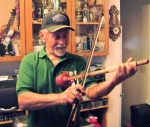 Angus Beaulieu, Fort
Angus Beaulieu, Fort
Resolution. Pho... -
 Dancers, Friendship C
Dancers, Friendship C
entre, Dauphin,... -
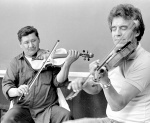 Laurence Flett and La
Laurence Flett and La
urence Houle. P... -
 Lawrence Houle, fiddl
Lawrence Houle, fiddl
ing and jigging...
Documents sonores
-
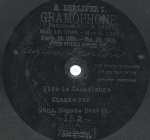 C Reel - Hyacinth Mckay, Pine Creek Manitoba. Old Native And Metis Fiddling In Western Manitoba
C Reel - Hyacinth Mckay, Pine Creek Manitoba. Old Native And Metis Fiddling In Western Manitoba
-
 D Reel
D Reel
-
 D Reel
D Reel
-
 Drops of Brandy
Drops of Brandy
-
 G Jig
G Jig
-
 Quadrille Set
Quadrille Set
-
 The Devil's Reel
The Devil's Reel

